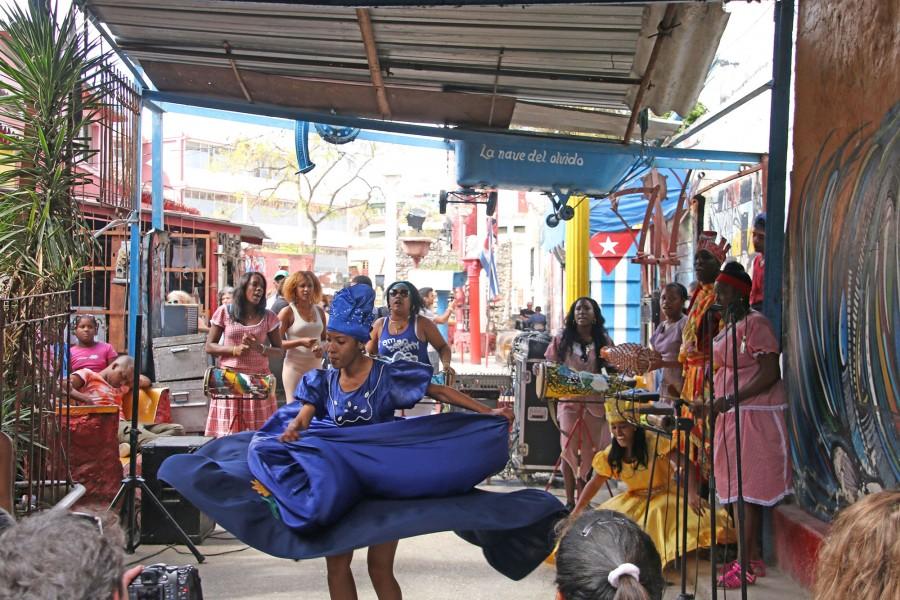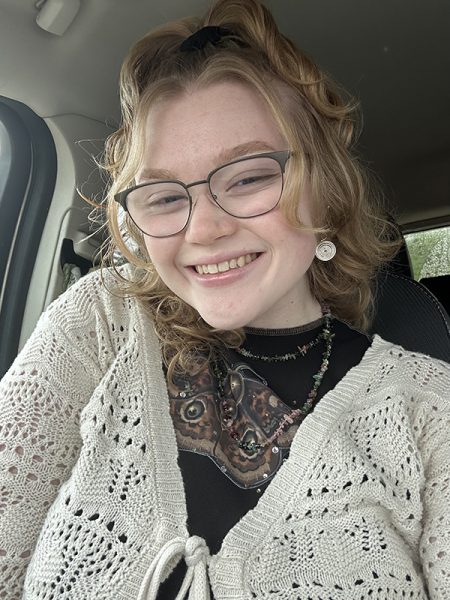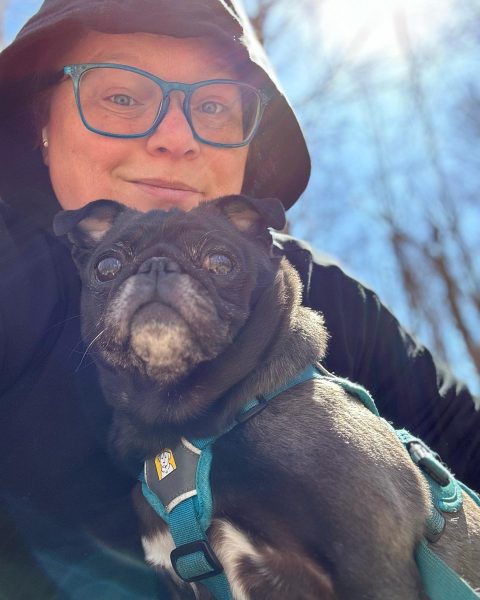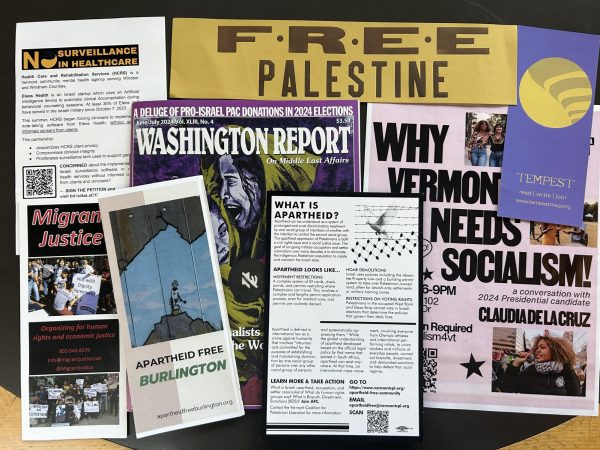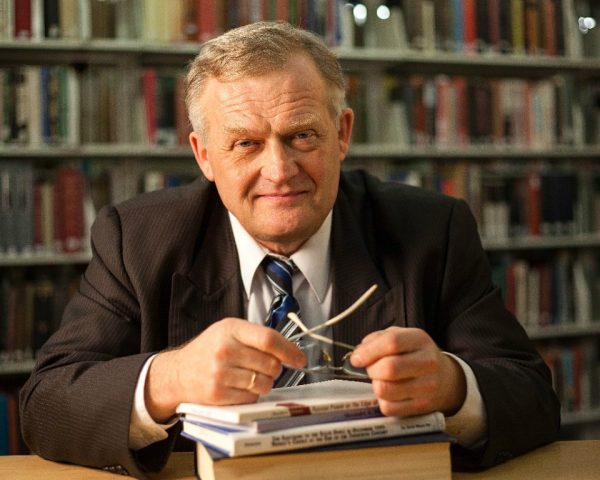An intense week in Havana
Afro-Cuban dancers on Calle Hamel
This past Feb. 19-27, 19 Johnson students and faculty spent eight very full days in Havana, Cuba, as part of The Art and Culture of Cuba.
“We wanted to immerse our students in the rich and complex culture found in Cuba, a place that, because of American government-imposed travel restrictions, relatively few Americans have been able to visit,” said Associate Professor of Writing and Literature Tyrone Shaw, who co-teaches the course with Professor of Fine Arts Ken Leslie.
Those of us lucky enough to take the class certainly were exposed to the Cuban culture in all its aspects, including fine arts, literature, politics, dance, music, and theater. No day was a dull day for the group. The course offered a schedule full of various visits to museums, including The National Museum of Fine Arts and The Museum of the Revolution. We also saw private artists’ studios, a dance performance at the National Theater, the Academy San Alejandro — Cuba’s premier high school for gifted art students — and the famed ISA campus of the University of Havana. In addition to those locations, we experienced a beautiful white sand and blue water beach on Cuba’s southern shores, a crocodile preserve, a national Cuban newspaper for the journalism students, a session of experimental printmaking for the art students, a trip to Cuba’s botanical gardens, and the infamous Bay of Pigs: the site of a failed American-instigated invasion of Cuba in 1961 to overthrow Fidel Castro.
However, despite a very busy agenda, students had plenty of allotted free time and were encouraged to work on their required projects, which will be presented to the class at the end of the year. There was also plenty of encouragement for students to simply explore Havana, find some cool shops or galleries and sniff out their own meals, or just interact with locals.
“It’s hard to find the balance between packing in as much in week as we can and providing students the time and room to discover Havana on their own,” said Shaw. “Judging from the stories we’ve heard already, I guess we did okay in that respect, but really, there’s never enough time.”
One thing that stuck out to many students was the hospitality of the Cuban people towards Americans, despite the USA’s hostile actions towards Cuba for the past half century. Marilyn Tagliavia, a Communications and Community Media major, noted their genuine personalities and how the people there make the most with the least.
“Something I learned was something that I already kind of knew, but I think that I actually really internalized it on this trip: that what you have is so much less significant than the way that you treat other people and choose to interact with them,” she said. “I only speak a little Spanish, and many of the people there only speak a little English, so when people would talk to us — which they would frequently — they were always so patient and understanding, and willing to try to explain things in different ways. No one there really has the money to buy a lot of the entertainment that we have access to, so personal interaction seems so much more important and serves as a great reminder that we’re all people. We just exist in different circumstances.”
Another one of many students’ main highlights was a visit to the San Alejandro Academy for visual arts, followed by a visit to the ISA campus. Students from Johnson were surprised to see how incredibly talented many of the artists there were, as well as the support they received. In the words of art major Brittany Miracle, “I realized how much concentrated talent there was . . . which was especially impressive considering the state of their economy and the lack of supplies. They are really dedicated to the arts.”
Senior theatre major Victoria Doughty expressed her surprise as well: “The fact that the arts are supported by the government so much surprised me quite a bit. When I learned about communism in high school, my teacher said that because everyone works to take care of each other there wasn’t much room for the arts. Karl Marx didn’t see it as helpful or useful to the community.”
For many students, just the lifestyle change and culture shock they experienced were the best parts of the trip.
“The high point for me was really the first couple days there, just a very dramatic change from the slow life of Vermont to the fast life of Havana,” said BFA student Jake Harnish. “It was really exciting at first and we did a bunch of stuff in the first couple days.”
He also expressed his surprise in people’s dedication to the arts, noting that he “learned you don’t need all these nice, fancy facilities to make art your passion, because I saw people in crumbling buildings making really cool stuff, and I guess it just taught me to be more resourceful.”
Although some students briefly fell victim to a stomach bug that plagued the group and sometimes it felt a little hot for Vermonters coming straight from freezing temperatures, the trip to Cuba delivered what Shaw and Leslie promised: an exciting immersion in a world little know by Americans. All the students expressed their gratitude and thanks to Ken and his wife Ruby, and to Tyrone and his wife Nancy, for an incredible trip and for thinking quickly on their feet when Cuba threw a wrench in the works, which was often.
“This trip definitely met my expectations because I tried to not have any,” said Tagliavia. “I got to try fruit and foods that I’d never heard of before, see art and dance that I wouldn’t ever have had the opportunity to do in Vermont, and I also got the chance to escape winter for a little while. Tyrone and Ken did a really amazing job both finding appealing things for us to do and also providing us with time to do our own exploration. It was a very well balanced trip.”
According to both Shaw and Leslie, The Art and Culture of Cuba will be offered again in spring 2018.


